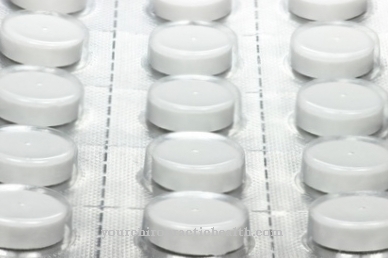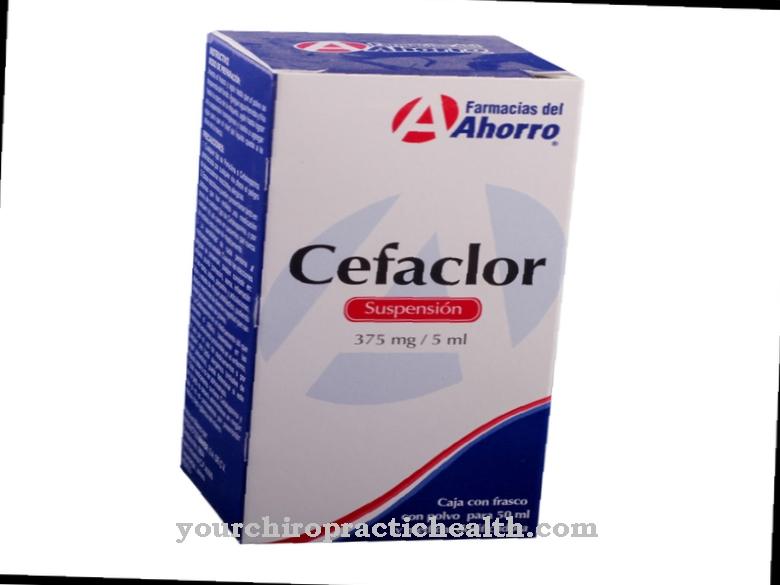With the active ingredient Cefamandol is an antibiotic that belongs to the pharmaceutical category of cephalosporins. The drug cefamandol belongs to the second generation of cephalosporins. The drug is primarily distinguished by its bactericidal properties. That means it kills bacteria.
What is cefamandol?
The drug cefamandol is mainly used in the therapy of infectious diseases that are caused by certain bacteria. It is crucial for the effectiveness of cefamandol that the pathogens involved are sensitive to the active ingredient.
Basically, the effect of the drug is due to its bactericidal effects. Similar to numerous other drugs from the same group of active ingredients, cefamandol also affects the formation of cell walls in bacteria.
In most cases, the drug will be administered parenterally. While taking the active ingredient, it should be noted that various undesirable side effects may appear. In some cases, for example, nausea or skin irritation at the injection site.
In some cases, the synonyms are also used for the medicinal product cefamandol Cefamandolum, Cefamandolnafat or Cefamandoli nafas used.
The active ingredient cefamandol is currently only available on the pharmaceutical market in the form of an injection solution. It is sold under the trade name Mandokef®. In Switzerland, the drug has been approved for pharmaceutical use since 1978. In drugs, the active ingredient is in the form of cefamandolnafate. This substance is usually a white powder that is rapidly soluble in water.
Pharmacological effect
The medicinal substance cefamandol is characterized by a characteristic mechanism of action, so that it is suitable for combating sensitive pathogens. Since Cefamandol is an antibiotic, the active ingredient is primarily aimed at bacterial germs that cause certain infectious diseases.
Similar to other types of cephalosporins, cefamandol is primarily bactericidal, that is, it kills specific bacteria. The mechanism of action is based on the impairment of the formation of bacterial cell walls. Because the construction of new cell walls is a fundamental component in the division and multiplication of bacterial cells. When cefamandol intervenes in this process, the bacteria are no longer able to divide without errors. A stable structure of cell walls is not possible in this way, instead the bacteria die as a result.
Medical application & use
Due to its spectrum of action, the drug cefamandol is suitable for drug therapy of various infectious diseases. Since cefamandol is an antibiotic, it primarily works against certain types of bacteria and the infections that result from them.
Basically, cefamandol shows good effectiveness against so-called gram-negative and gram-positive pathogens. Cefamandol is a beta-lactam antibiotic and is particularly effective against staphylococci, Proteus mirabilis and Haemophilus influenzae.
The drug cefamandol must always be dosed according to the product information. In the majority of cases, the active ingredient is administered parenterally, i.e. either intramuscularly or intravenously.
Risks & side effects
A variety of undesirable side effects and other complaints are possible during or after treatment with Cefamandol. However, these vary from person to person and differ in their severity. In addition, not all patients suffer from side effects.
As part of therapy with the active ingredient cefamandol, side effects such as hypersensitivity reactions, vomiting and nausea are possible. In addition, some patients complain of headache and dizziness and local skin rashes at the site of the injection.
The active ingredient cefamandol can also impair liver function and blood clotting. It should be noted that, in principle, no alcohol may be consumed during therapy with the antibiotic cefamandol. The consumption of alcohol in conjunction with cefamandol can cause intolerance reactions, which under certain circumstances can lead to serious complications.
In addition, when prescribing Cefamandol, it should be noted that there are various contraindications for which taking the active ingredient should be avoided. For example, antibiotics should not be given if hypersensitivity reactions to the drug or other drugs from the same group of active ingredients have occurred in the past. The complete information on this can be found in the specialist information for the drug.
It should also be noted that the active ingredient cefamandol interacts with certain other substances. This is the case with alcohol, for example. In addition, observations indicate that the active ingredient cefamandol interacts with various other drugs. These include, for example, the drug probenecid, certain antithrombotics, and other types of antibiotics. If undesirable side effects occur during treatment, a doctor should be informed quickly.



























